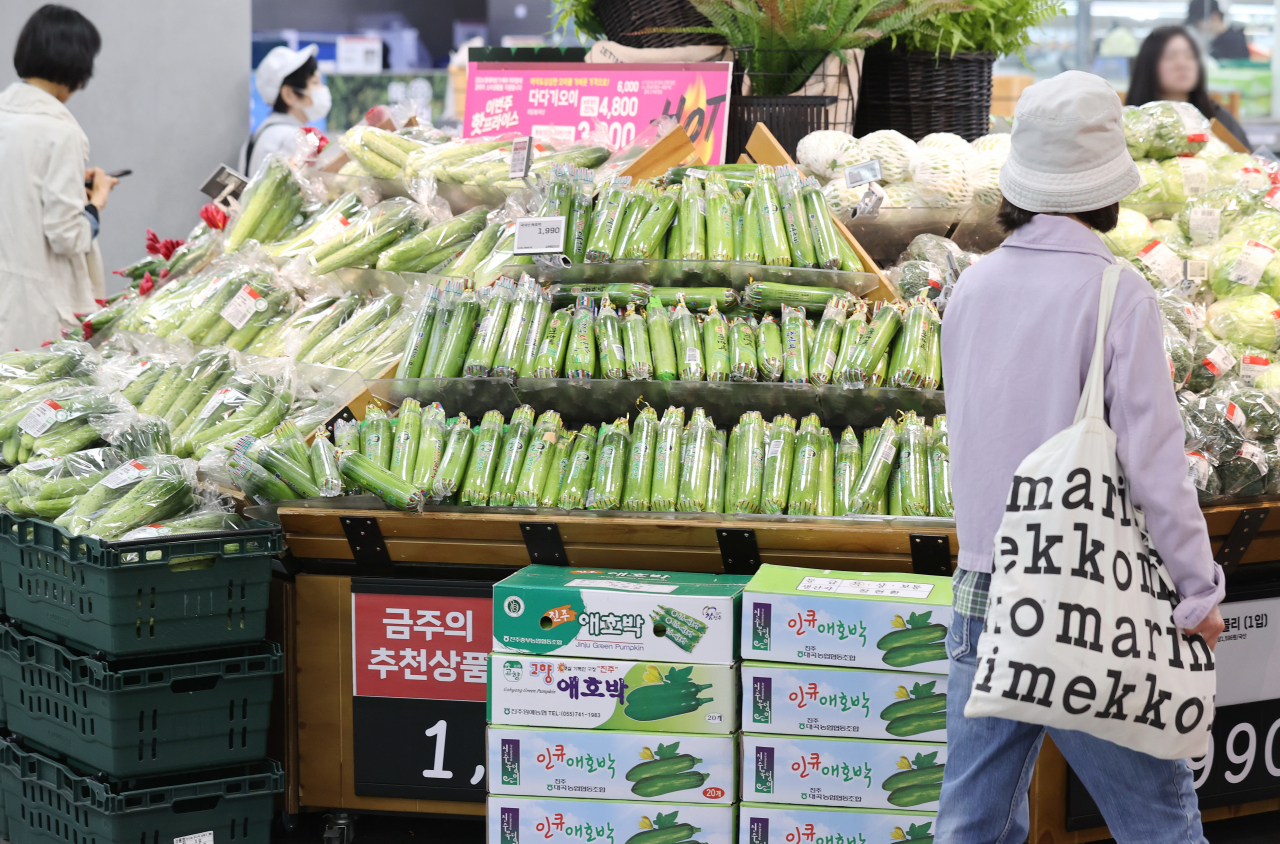Inflation eases in April, continues bumpy ride
Consumer price growth falls below 3%
By Im Eun-byelPublished : May 2, 2024 - 16:48

South Korea's inflation fell to the 2 percent range as the country’s directive to lower price growth has been continuing to go down a bumpy path on fluctuations in the oil and agricultural prices, data showed Thursday.
Consumer prices, a key metric of inflation, rose by 2.9 percent in April, marking a 0.2 percentage point decrease from the 3.1 percent reading shown in both March and February, according to the data from Statistics Korea.
“The prices of petroleum products, which remain volatile due to the conflict in the Middle East, did not rise as much as expected,” Kong Mi-sook, a senior official at Statistics Korea, said at a press briefing held Thursday.
“The on-month drop came from the reduced price growth of agricultural, livestock and fishery products,” Kong said.
Despite the latest sign of easing inflation, local authorities remained cautious to offer a positive outlook. Consumer prices are expected to continue to fluctuate until the growth rate falls below the target rate of 2 percent, considering volatile fuel and agricultural prices and the fluctuating Korean won's value against the US dollar.
“The slowdown of inflation in April is of an expected level,” Bank of Korea Deputy Gov. Kim Woong said at a separate meeting on Thursday.
“The growth of consumer prices is projected to ease mainly on the core inflation side, but the uncertainty is grave, considering the fluctuation of fuel prices related to the geopolitical risks and the rising prices of agricultural products.”
The central bank's efforts to tame inflation with its monetary tightening policy have been partly showing results. The core inflation, excluding food and energy prices, has been easing off steadily. It rose by 2.3 percent in April, compared to 2.4 percent in March and 2.5 percent in February.
Meanwhile, the US Federal Reserve kept its key rate pat for the sixth consecutive time Wednesday, maintaining the benchmark interest rate between 5.25 and 5.5 percent.
With the US Fed’s rate freeze, the Korea-US rate is maintained at up to 2 percentage points. The BOK has kept the key rate at 3.5 percent for more than a year since February 2023.
In response to the US Fed’s rate decision, Finance Minister Choi Sang-mok vowed to take "bold" measures to stabilize the market in case of excessive volatility.
“The economic fundamentals remain strong in Korea, as shown in rising exports and a rebound in private consumption,” Finance Minister Choi Sang-mok said at an emergency meeting with financial agencies on Thursday.
“Bold measures will come into place to stabilize the market if it exhibits excessive volatility."
With the US Fed freezing the rate, local shares fell slightly. The country's benchmark Kospi closed at 2,683.65 points, losing 8.41 from the previous trading day and the Kosdaq wrapped up at 867.48 points, down 1.45.
The local currency gained its value by 6.1 won against the US dollar from the previous session, closing at 1,375.9 won.
Meanwhile, the Bank of Korea is set to hold a rate-setting meeting on May 23. The market expects the central bank to maintain the 3.5 percent base rate.



















